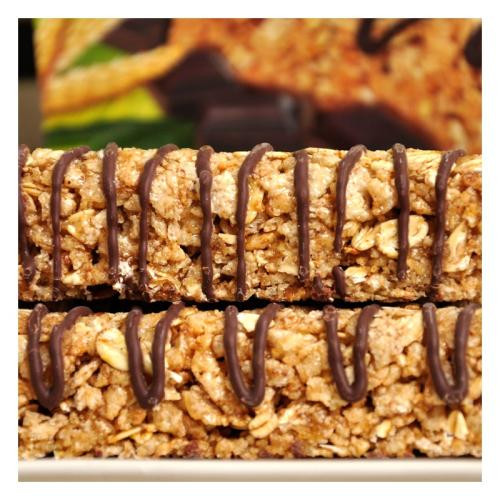The application of cereals in sports nutrition foods in China (2)
Health benefits of cereals

Cereal is a health care product for people's daily diet. Studies have shown that rice grains have a variety of health benefits, such as glutinous rice with spleen and stomach, Buzhongqi, nourishing yin and fluid, removing trouble and quenching thirst, and preventing intestinal diarrhea. Spleen and stomach are weak, polydipsia, malnutrition, and weak after illness, but patients with diabetes should pay attention to not eating more.
Brown rice can promote gastrointestinal motility, relieve stomach diseases such as stomach diseases, constipation and hemorrhoids, reduce cholesterol and reduce the risk of heart attack and stroke. Glutinous rice has the effects of diluting water, spleen and diarrhea, clearing away heat and detoxifying, and has therapeutic and preventive effects on spleen deficiency, diarrhea, muscle soreness and joint pain. Cereal bar manufacturing equipment
Oats and rye in wheat grains have health functions such as anti-cancer, anti-oxidation and probiotic effects. The effect of rutin in bitterness on blood pressure lowering and blood lipid lowering is also significant.
Definition of sports nutrition food
In 2007, the Chinese Food Law stipulated the definition of sports nutrition foods, that is, “sports nutrition foods are foods specially processed to meet the physiological metabolic state, exercise capacity and special needs of certain nutrients”.
Until 2015, the “Food Safety Countries: Standard Sports Nutrition Foods General Regulations” redefined sports nutrition foods, that is, sports nutrition foods are to meet the sports population (referring to participate in physical exercise more than 3 times per week, each time duration 30 Foods specially processed for the physiological metabolic state, exercise capacity, and special needs of certain nutrients for people with min and above, each with moderate or higher exercise intensity.
Classification of sports nutrition foods
According to international classification standards, sports nutrition foods are mainly divided into sports nutrition foods, sports supplements and sports drinks. In some developed countries, such as the United States and Canada, sports nutrition foods are divided into two categories: sports people and non-sports people. At the same time, they are divided into professional athletes, fitness enthusiasts and sports enthusiasts. The classification of sports nutrition foods in China mainly integrates international standards with the classification standards of developed countries, and classifies them according to the two methods of characteristic nutrients and sports.
According to the characteristic nutrients added to the sports nutrition food, it is divided into:
(1) Supplementary energy: With carbohydrate as the main component, energy can be supplied quickly or continuously.
(2) Control energy class: Meet the exercise control weight demand, including promoting energy consumption and energy substitution.
(3) Supplementary protein: The protein and/or protein hydrolysate is the main component, which can meet the growth and repair needs of the body tissue.
According to sports, sports nutrition foods are divided into:
(1) Speed strength class: It is characterized by creatine and is suitable for people who use sprint, high jump, ball, weightlifting, wrestling, judo, taekwondo, bodybuilding and strength equipment exercises.
(2) Endurance class: It is characterized by vitamin B1 and vitamin B2. It is suitable for people in middle and long distance running, jogging, brisk walking, cycling, swimming, boating, aerobics, dance, outdoor sports and other people.
(3) Recovery after exercise: It is characterized by peptides and is suitable for people with moderate or high intensity or long-term exercise recovery.